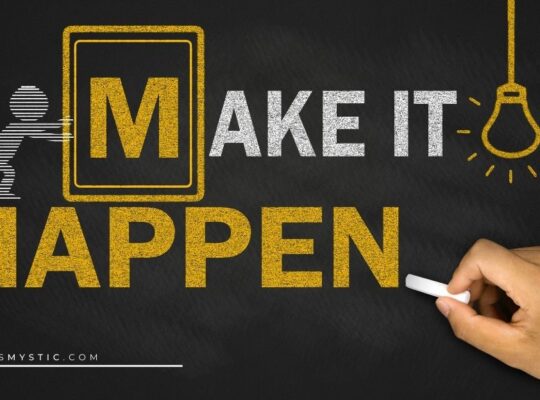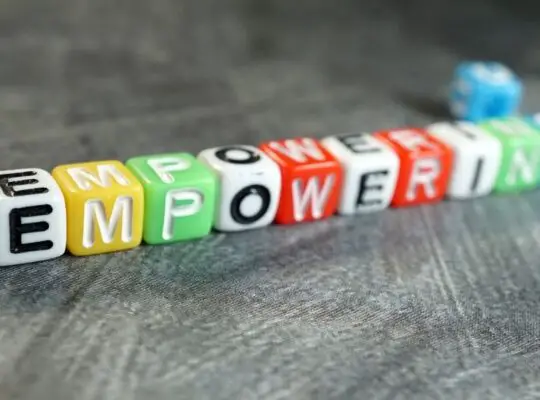Choosing to design your life means you are opting to look at your life not just as a goal but as an adventure, as a process rather than a destination. The designed life is one that allows you to choose among many possibilities, to consider multiple pathways and weigh what energizes you and brings you joy. It is one that will enable you to fulfill your dreams and then begin reaching for new ones.
Designing your life begins by examining your current situation to determine if you are truly happy. If you answer no in any of the significant areas of life satisfaction, then it is time to start designing something new, something that will bring you joy and help you become the greatest version of yourself you can possibly be.
There is nothing more disappointing in life than to find success at something only to discover that it does not really bring you happiness. To work hard, sometimes for years, to reach a goal that does not make you feel accomplished or joyful is a waste of your precious time on earth and of your motivation and drive to succeed.
Choosing to design a new life, a better life that reflects your interests, passions, joys, and needs, is the most important thing you can do for yourself. Design principles can teach you how to focus, when to alter your efforts, and that it is also okay to want something new. The first step to designing your life, though, is to realize that you must take control of your life rather than your life having control over you.
What It Means To Take Control of Your Life
Taking control of your life, actually designing the life that you want to live, is very different than just living your life. When you live your life, you often let others’ priorities and the obstacles you face dictate how you spend your time. Instead of letting life happen to you, instead of life being something to which you react, you can instead take control and start living the life that makes you happiest.
To take control of your life means several things. First, it means you accept responsibility for what happens in your life. You recognize that your choices led you to where you are, your actions (or inaction) have led to your present circumstances, and you are willing to accept the responsibility for all your decisions moving forward.
Secondly, taking control means you are ready to design a life that will bring you true fulfillment, allowing you to be the most excellent person you can be. Instead of settling for something less, designing your life will enable you to be the most exceptional person possible and choose a path that allows you to follow your dreams.
Third, taking control means recognizing and overcoming your fears, which can hold you back and prevent you from accomplishing everything you set out to attain. When you design a life for yourself, you have something to work toward that is meaningful and important. This provides motivation for overcoming the fears that have been thwarting your progress and helps you face your worries head on.
The first step in the process of taking control of your life is to gain clarity about what it is you really want, who you think the greatest version of yourself really is. Check in with yourself and spend some time in reflective about your dreams, ambitions, current frustrations, and fears.
Try your best to block out the business of daily living and just focus on being who you really are. As you are reflecting, it is worth it to write down your thoughts and questions. The rest of your guide provides you with activities and specific steps you can take to guide this process, as well.
Being Proactive Will Change Your Life
Being proactive in your life places you firmly in control of your own destiny. Being proactive is the opposite of being reactive, when you let life unfurl before you and spend all your time acting in response to whatever is thrown your way. When you learn to reframe your mindset towards being more proactive, you will realize many benefits in your life.
When you live your life reacting to events, people, and circumstances, it can lead to a feeling that life is just happening to you, rather than you actually being in control of your future. Learning how to be proactive allows you to take action to put you on the path of where you want to be, to take control of all life’s circumstances, and to regain power over your future.
When you are ready to take control of your life and learn to be proactive, you will experience so many personal and professional benefits. Here are a few of the most profound benefits of living a proactive life.
Change No Longer Seems So Frightening
When you live a reactionary life, you fear change and the unexpected. When you are just reacting to your life constantly, failure can seem very intimidating, even to the point that you no longer are able to make decisions.
Learning to have a proactive mindset means you have a plan for the future and are prepared to cope with the setbacks and changes that will come your way. You can use your energy to focus on making progress toward attaining your goals instead of dealing with events and circumstances that force you to be reactionary.
Your Decisions are Better Informed
When you wait for life to hand you problems, then react to them, you are forced to make quick decisions and with few options. Making better choices means thinking ahead and planning for possible contingencies. Being proactive gives you better information, provides you with more to consider, and ensures you have the resources you need to put your plan into action. When you are reactive, you spend too much time being unorganized and unprepared for what life has in store, which means you are not making the best possible decisions about how to design the life you really want.
You Handle Problems Problems More Effectively
Living a proactive life means you think through potential unforeseen problems and have a plan for how to handle those. It also means you are able to adapt to these issues and setbacks more effectively, accepting them as part of the process rather than insurmountable challenges.
Designing your own life and living proactively helps you accepts that life is a journey, and each experience is a learning process that will help you grow.
Designing the greatest version of yourself and your life is the ultimate proactive step, because you are taking control over your future. You are accepting the choices you have in life, and you are making the best decision you can make for yourself at this moment in time.
It is not always easy, though, so being prepared by understanding the challenges that could lie ahead will help you be more successful in your efforts.
Challenges Women Face
Women face many challenges when it comes to designing the life they want to live. If you want to become the greatest you that you can possibly be, you should be aware of the potential obstacles you may face, so that you can be better prepared to meet and overcome them. Here are the most common challenges facing women who are seeking to design their greatest lives.
Comparison
As Teddy Roosevelt famously noted, “Comparison is the thief of joy.” When you stop focusing on you on your own life and its many blessings and gifts, and instead examine what others have or are able to accomplish, you are setting yourself up fo disappointment.
Comparing yourself to others is easier than ever before, with social media always telling you what others are doing, how happy they are, or what they have accomplished.
When you start comparing yourself to others, you will likely see someone who has exactly what you want or is doing what you would like to do, which can lead to resentment.
When you compare yourself to others, it reinforces a false narrative that success is somehow scarce or that you should be afraid that you too will not achieve those goals. Comparing yourself to others creates nothing but negative emotions.
Women especially often find themselves comparing their success as a professional, a mother, a partner, or even as a friend to who well other women are successfully navigating those many roles in their lives. But this is an unhealthy activity.
The only thing you need to compare yourself is to is your vision of your greatest self. That goal is what you are striving to achieve, and it does not matter what anyone else is doing, because they are not a part of your plan. Stay true to yourself and what is important to you, and you will not be led astray by comparison.
The Need for Approval
Many women feel as though they have been conditioned since early childhood to seek approval from others and to avoid rejection of social norms. Girls are taught to be “people pleasers” who just want everyone to get along, and this follows us into adulthood and colors how we think about ourselves and others.
When you seek the approval of others, you are neglecting the most critical source of approval of all, which is yourself. When you forego your own happiness for that of someone else, you are no longer doing what makes you happy. This is not helping you achieve your dreams. Letting go of the need to please others is an important step in freeing yourself from these restraints.
Being rejected by someone else just means they have a different opinion of you than you have of yourself, and that is okay. When someone judges you, you then have new information about their beliefs and values.
Remember that their thoughts and opinions have absolutely no impact on how you choose to live your life. Remember that the only approval you need in life is your own, since you are the one that must live with the consequences of your actions and decisions.
Fear of Failure
While fearing failure is not unique just to women, females often feel even more pressure to succeed in all aspects of their lives and never show weakness through failure or faltering. The fear of failure can be a powerfully hindering mindset, as it prevents you from taking risks, from feeling confident in your choices, and from asking for help from others who can help you reach your goals.
When fear strikes, the best thing you can do is to confront it head on and objectively examine what you fear. How likely is your worst-case scenario to happen, and what would it take to recover from that outcome?
What skills and knowledge do you have at your disposal to minimize that threat? How much of your fear is rational and how much is not?
Spend some time getting to know and understand that fear, and you will soon realize there is not as much to be afraid of as you once thought.
Perfectionism
Whether it is in your personal or professional or life (or both!), most of us feel like we should have it all together, we should be able to handle everything, and we strive to be perfect versions of ourselves.
Perfectionism can be a debilitating mindset, as it places you in a frozen state, waiting until the perfect opportunity to make a move or try something new. It forces you to work hard at things that are not that important when “good enough” would suffice.
Perfection is totally unattainable, so striving to achieve anything resembling it is a fool’s errand. The sooner you realize that the sooner you will see that nearly everything you decide can be un- decided. Forward movement is nearly always preferable to the status quo, but it is hard to make progress when you need things to be perfect in order to be happy.
Dealing with Disappointment
Women experience a lot of disappointment in life, sometimes due to the harsh realities of sexism, unequal opportunities, and the role of women in today’s world. Women today still earn less than their male counterparts. Many women choose to leave the workplace after starting a family because their professional prospects are not as fulfilling as they had hoped.
Women must balance dual roles as professionals and caregivers much more so than men, even today, which can lead to disappointment on how successfully you are able to succeed in either role.
Learning to deal with this type of disappointment, as well as other less-than-ideal circumstances, is part of the design process. By designing a life that will bring you joy, you learn to recognize what gives you energy and keeps you engaged, and to focus your goals in those areas. This helps you stay focused on your dreams, even in the face of disappointment.
Being Free to Change Your Mind
As you age and as life’s circumstances change, your dreams will change, as well. What is important to you when you are young will likely not be the same goals you have in middle-age or as you near the end of your career. This can be scary for some people and embracing the unknown or new possibilities can be quite challenging for some.
Embracing the design philosophy, and utilizing these principles throughout your life, means you can change your mind freely, you can embrace multiple futures and choose which works best for you now and later on. You can change your pathway and alter your goals as your dreams and priorities shift in life.
Lack of Support
If you are a woman in a professional field with few other females, you may feel isolated in your work. Blending in and being accepted by colleagues in these fields can be difficult. Even in fields with more women, though, there can still be lack of support, as women become more competitive with one another to achieve success, sometimes at the expense of other women.
A lack of support for women in the workplace can lead to a drop in ambition and an overall dissatisfaction with career choices over time. When you lack mentors and role models who have experienced similar things as you, it becomes difficult to persevere in some situations.
Knowing these challenges, as well as the benefits of choosing to proactively design your life has hopefully made you ready to start this important design process. Below, we describe each of the steps, including how it will help you become the greatest version of yourself.
How to Design Yourself
Designing your life follows the same basic principles as other design processes, and we will outline each of these in more detail below. The basic idea behind designing your life is that coming up with a new product or process should not be any different than coming up with the life you want to live. The principles that govern the types of designs that create new products are the same that help you create the life you want.
Designing your greatest self starts with a period of discovery and curiosity as well as some experimentation. This is followed by an examination of how you are restricting yourself and a shift in mindset to embrace the evolving nature of what it means to “become” yourself.
Finally, it is about selecting from multiple versions that you find pleasing and putting a plan into motion, while asking for help when you need assistance in the process.
The basic principles described here mirror those outlined by Bill Burnett and Dave Evans in their book Designing Your Life: How to Build a Well-lived, Joyful Life. There are many resources available online to help you navigate these steps and stages, but before you dive in, it is important to have a basic understanding of how the design process works. Here is how to do it.
Step 1. Figure out where you are right now.
The design process should begin with a critical examination of the four major areas of your life- work, love, play, and health.
What is working well in each of these areas? What needs to be improved?
How well are you balancing all of these areas collectively in your life?
Take some real time to give an honest assessment of yourself and where you are currently. If something bothers you or you identify a problem, that is a good place to start. Designs work best when they meet a need or answer a question, so decide what your design is meant to do.
There is no perfect balance between the four areas in your life, and what is the right balance now may shift over time, as your priorities and needs change. Be sure to reassess this often, and you want to be sure you are dedicating the right amount of focus to each as you continue to grow.
When you develop a design mindset, you will see yourself and your life as continually evolving. You will notice that working on creating your greatest self is never actually finished but neither is enjoying the rewards of these efforts. Design is only finished when your life is over, so never stop striving in the design process.
Step 2. Figure out what matters to you.
After you have identified what is and is not really “working” in your life right now, spend some time identifying your views on specific aspects of your life.
What do you need in order to be happy with your work? What does happiness in your personal life mean?
Write a paragraph or two on these two main ideas, concentrating on what gives you meaning and what you believe related to these two pivotal parts of your existence. This is your compass, and it should guide your future directions in designing the best you possible.
Compasses change over time, so it is important to recognize that what you believed a few years ago may not be true today, and your views on life and work will change in the years ahead.
Your compass is not static, which is why the design process is never-ending. Return to this exercise as often as you need to ensure that your design is aligned with your goals and views.
Step 3. Find out what brings you joy and energy
This step is a helpful one to understand how your daily activities affect you. Which things that you do each day bring you energy and keep you engaged, and which drain your focus and motivation?
Log all your major activities for several weeks. Look at everything, not just what you enjoy or what is not enjoyable.
What patterns do you notice? In which areas do you struggle the most to maintain attention and in which do you find yourself experiencing the most enjoyment? How can you change your schedule to take advantage of energizing activities and eliminate or at least diminish those that tend to leave you feeling unmotivated and unfocused?
Step 4. Reframe your thinking about what it means to change your life.
Many who embark on this journey go into it thinking there is one new life that is the best life for them. But, design thinking teaches us that there are often multiple answers to any one question, multiple solutions to arrive at the same truth.
There is more than one answer to your problem of how to improve your life and become the greatest version of yourself. In fact, there isn’t just one greatest version of you. There are many. And instead of choosing one, you can imagine all of them.
There are multiple ways your future can unfold that will bring you happiness and provide you with fulfillment and energy. Instead of trying to imagine the ONE right future, try imagining multiple outcomes that would make you happy.
Step 5. Create three scenarios for your future.
The authors of the book on designing your life recommend three specific futures that you should imagine. There may be others you can also envision, so do not feel you have to limit yourself to these three.
However, try not to create so many choices that you are lost in options.
The first scenario is probably the easiest, as it is to imagine your life for the next five years as if you are continuing on your current path.
Where do you see yourself five years from now if nothing changes?
The second asks you to imagine your life if your current situation were no longer available. What if your current life were suddenly gone? What would you do to support yourself? What would you do to find personal fulfillment and happiness?
The final possible future is to throw off all the barriers and to imagine your life five years from now if you did not have to worry about money or what others thought. How would your personal and professional life be in five years without these constraints?
In all three scenarios, you should include personal and professional goals that encompass all four of the main aspects of a balanced, healthy lifestyle. Brainstorm around all three of the scenarios to imagine the possibilities and possible stumbling blocks.
This gives you a broader perspective and can help you identify the common threads that should be present in whatever plan you decide to go with moving forward.
Step 6. Build a prototype.
Many in design call this step “prototyping.” Prototypes are preliminary models that can be tested before final decisions are made. These early designs allow us to test assumptions and experiment with various possible futures for ourselves.
So, how exactly do you prototype your life?
Prototypes in design are fast experiences that can help you quickly learn something new or test out some basic assumptions of your plan. So, this part of the process involves looking for activities you can try or things you can do that will test out some piece of your plan.
Is there a volunteer activity that you can try to see if it energizes you? Is there something new you would like to learn as a part of your possible new future?
Small experiments can often illuminate the path forward, identifying strengths or hidden interests and giving you some exposure to different pathways.
Step 7. Choose and then move forward.
After examining your prototypes and their many iterations, it is time to make a choice. Pick your top four or five best ideas and options, and carefully weigh the positive and negative aspects of each.
When you have narrowed the field to just a few choices, spend several days at a time imagining your future life if you select each option. Contemplate how you will feel about each choice, one at a time, and imagine yourself in each version of the future. Which brings you the most joy, which excites you the most?
Then, you make your choice. Once you have selected, though, you have to release all the other options and commit fully to your chosen path. Otherwise, you run the risk of trying to keep options open, which means you never actually commit to your dreams. Fear of missing out can destroy potential happiness.
Enjoy your journey, focus on what you need to do to achieve your dreams, and start moving forward. If you do not like where you are headed sometime in the future, you now have the design tools to start again and prototype a new solution.
Revisit the Process
Like engineering, designing your life and your greatest self is an iterative process. Once you begin making progress, you need to reevaluate how things are going, return to your goals to see if they are still where you want to be heading, and make adjustments along the way.
Any good design will be responsive to input from your experiences, so do not think that your design is set in stone once you reach this final step.
Final Thoughts
Designing the greatest version of yourself and your life is a process. It comes from a commitment to lifelong learning, embracing obstacles as opportunities, and understanding that you are never really “finished” developing.
You will continue to evolve and grow your entire life, and by focusing on the process, rather than the outcome, you will gain more insight into yourself and be happier along the way.
Throughout the design process, it is also important to remember that you are not alone on your journey. You can ask for help from others and keep yourself open to input and feedback from those who are important in your life.
The design process can help you achieve your dreams, imagine new futures, and embrace a mindset of learning and growth.
By embarking on this journey, you are taking control of your life and bravely facing the challenges that we all face in our continuing adventure toward self-actualization. Keep the right mindset, and you will soon find yourself achieving new heights and ready to set new aims for your future.







